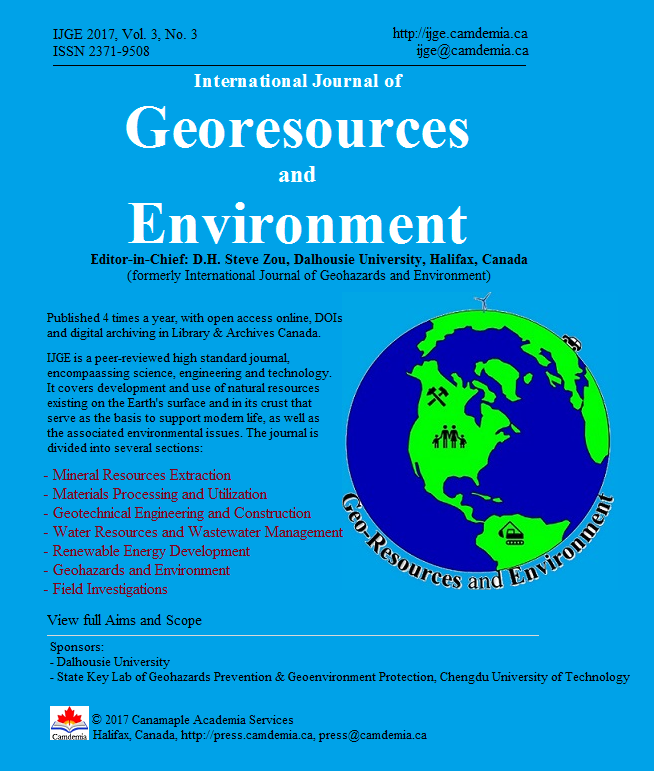Spatial Flood Potential Mapping with Flood Probability and Exposure Indicators of Flood Vulnerability: A Case Study from West Bengal, India
DOI:
https://doi.org/10.15273/ijge.2017.03.009Keywords:
assessment, probability, danger level, exposure indicator, flood potentialAbstract
Flood is an annual event in the district of Jalpaiguri. Almost all the administrative blocks of the district are more or less flood prone. Numerous rivers and rivulets are originated and pass through this district, which create floods mainly on account of rainfall in the source regions of these rivers, apart from rainfalls in the district itself. The shivering rivers during monsoon periods carry massive discharge and frequently cross danger levels. Danger level is the threshold level of water from which the event is considered as a flood. The probability of the occurrence of flood can be calculated with the past records of flood events in flood prone areas. On the other hand, the vulnerability of flood events is entirely dependent on the exposure of the area. Exposure of the area and the probability of the adjacent rivers can explain how much this area is subject to floods. In this paper, the authors tried to prepare a spatial flood potential map for the entire district based on probability analysis and an exposure indicator.Downloads
Published
Issue
Section
License
Copyright, Terms and Conditions
The International Journal of Geohazards and Environment (the Journal) is published by Canamaple Academia Services (the Publisher) online with open access, under a Creative Commons Attribution-Noncommercial license (CC-BY-NC) (http://creativecommons.org/licenses/by-nc/4.0/). Authors (the Authors) submitting papers (the Work) for publication in the Journal automatically agree to the following terms and conditions.
1. Under the license (CC-BY-NC), Authors give permission for others to share and reuse the Work, as long as the original source and author(s) are properly cited (i.e. a complete bibliographic citation and link to the Journal website) and the material is not used for commercial purposes. Any sharing or reuse must however indicate the original CC-BY-NC license terms of the work.
2. Authors transfer and assign to the Publisher all copyright in and to the Work. However Authors retain all proprietary rights except the copyright, related to the Work and also retain the rights a) to use, reproduce, distribute, and publicly display the Work in any medium in connection with the Authors‘ academic and professional activities, such as teaching, presentations and lectures, b) to create derivative works from the Work and to make full use of the Work in future research and publications, c) to authorize others to make any non-commercial use of the Work, d) to make both the pre-published and final-published versions available online in institutional and/or disciplinary repositories or on their own websites with a citation and link to the original paper published in the Journal.
3. Authors warrant that the Work is their original work, it is not copied from anywhere or anyone else, they are totally responsible for the authenticity, originality, validity and accuracy, and the facts and views are their own, that the Work contains no matter which is defamatory or infringes any literary or proprietary rights, intellectual property rights, or any rights of privacy, and that the Work has not been simultaneously submitted to any other journals or publishers. Authors further agree that their manuscripts whether accepted or rejected will not be returned and the rejected manuscripts will be disposed at the journal editor's discretion.
Disclaimer: The Publisher, the Journal and the editors accept no responsibility for statements or opinions expressed by authors. Use of information and materials in the Journal is the sole responsibility of users.


